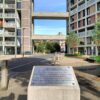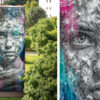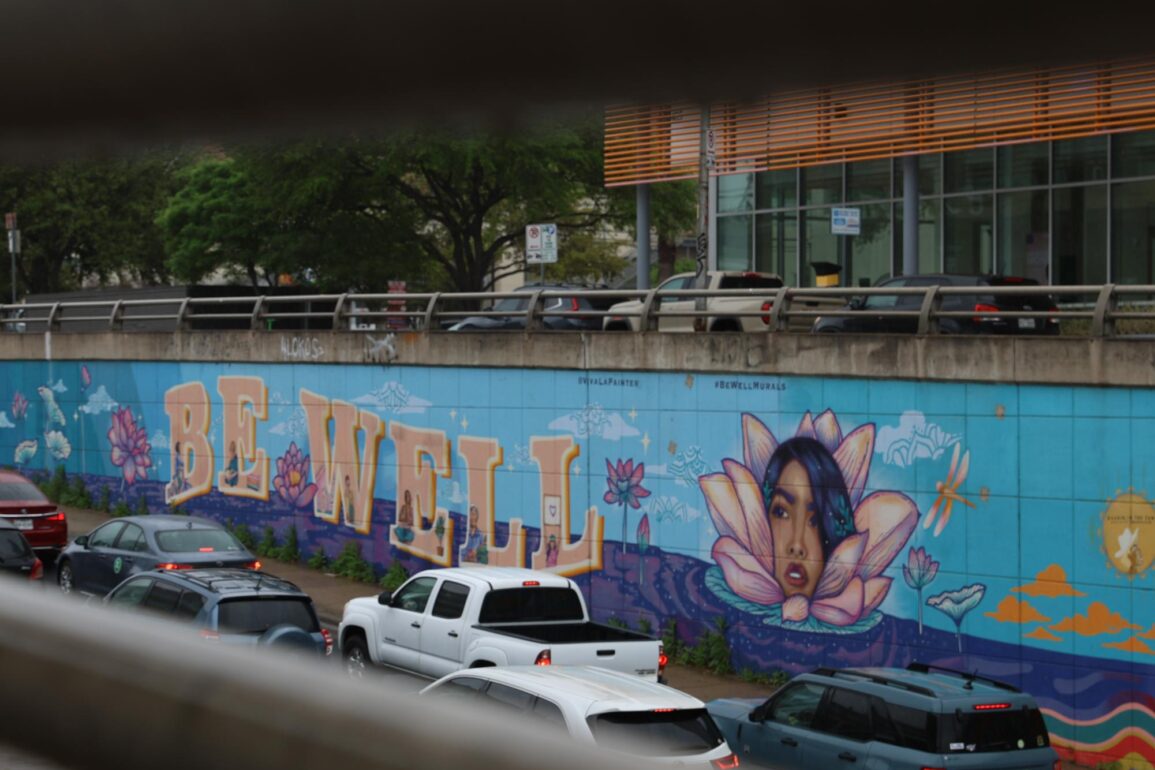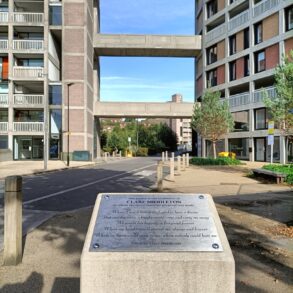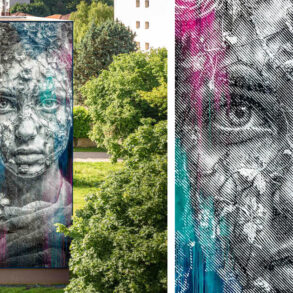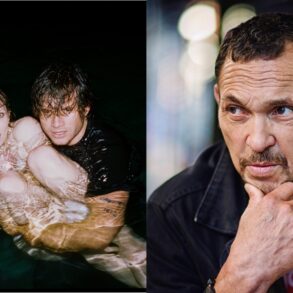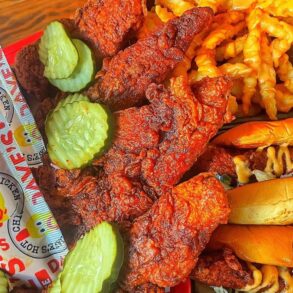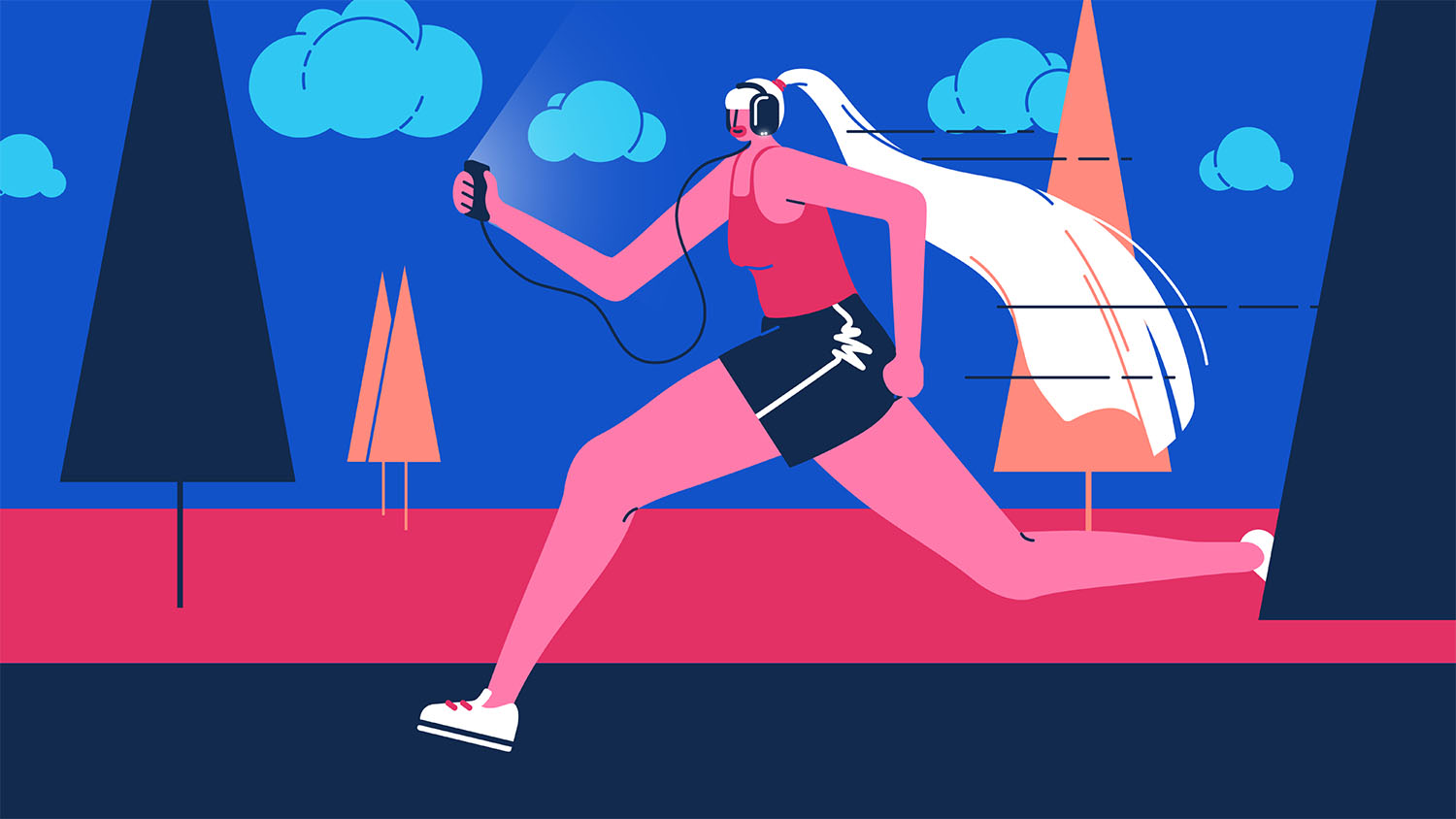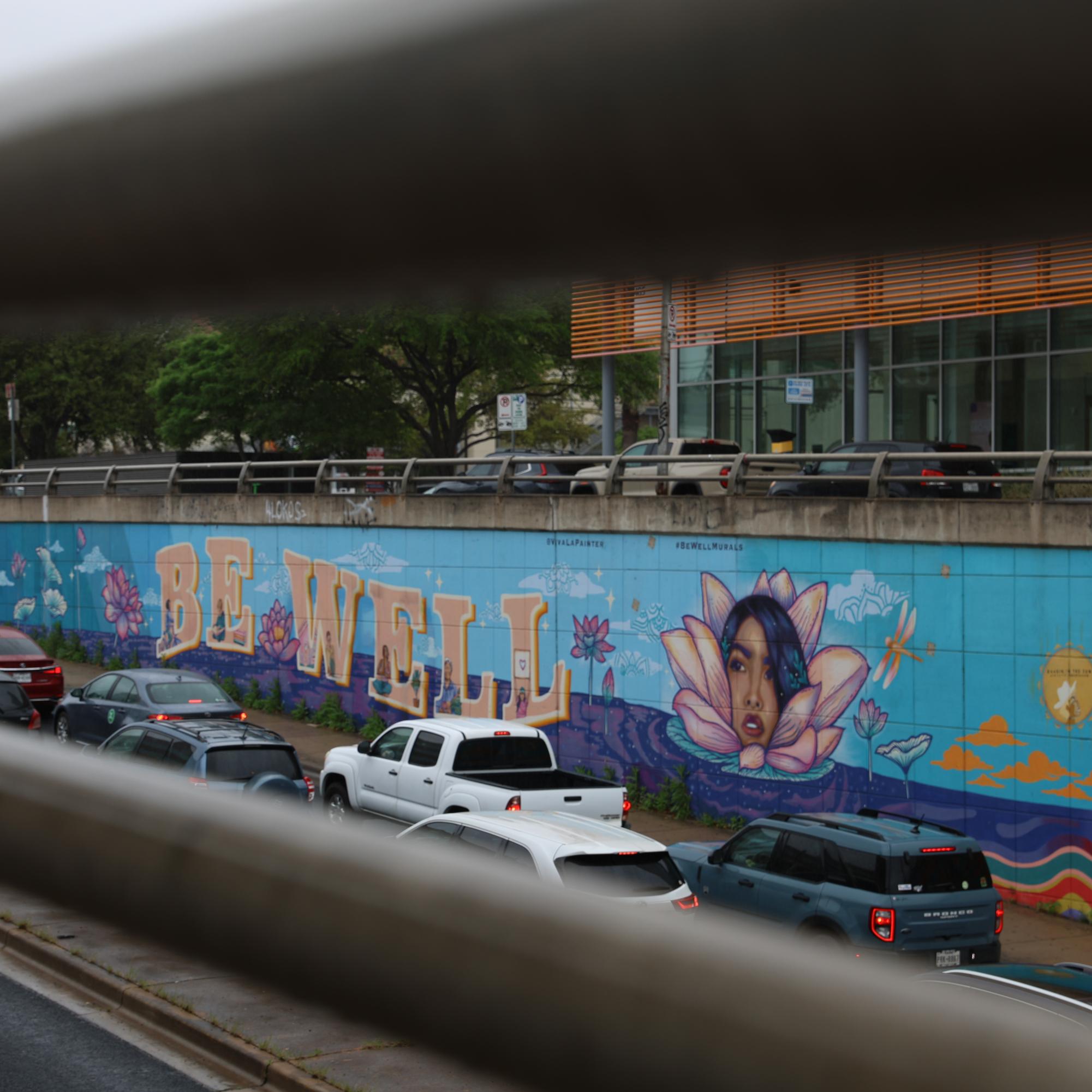
“Old Bakery” mural pictured on March 26, 2025.
The year was 1973, and the only high-rises were the waistlines of bell-bottom jeans. Three UT art students gathered at the 23rd Street corridor off of The Drag to create what would become the first mural to represent Austin’s storied history.
“Austintatious,” painted by Kerry Awn, Rick Turner and Tommy Bee, remains on the wall between The Co-Op and Dollar Slice Club as one of Austin’s longest-standing public art displays.
In 2025, it’s hard to explore Austin without stumbling across one of its many public art pieces. From high-rise murals downtown to graffiti art spanning the side of Congress Avenue Bridge, public art decorates the entire city.
But art didn’t comprise Austin’s landscape overnight.
The first of Austin’s public murals
Austin’s murals began with UT professor and critically acclaimed contemporary artist Seymour Fogel, a UT professor and critically acclaimed contemporary artist, who painted “Creation” on the side of University Baptist Church in 1950.
However, until the 1970s, the majority of Austin’s art remained reserved for interior walls and galleries.
Come 1973, three UT art students set out to change this, framing Austin’s history for future UT students.
“It was kind of a new thing that we saw in California,” said Awn, who’s originally from Austin. “That was a perfect wall at a perfect time. … It’s still up there 50 years later.”
The mural appears simple at first glance: Stephen F. Austin in the center, the UT Tower off to one side and the state Capitol off to the other. However, a deeper look at the mural reveals a rich assortment of influential Austinites.
“You start realizing there’s a lot more than meets the eye,” documentary filmmaker Mike Woolf said. “You’re looking at these hippie hieroglyphics.”
Stories such as Jim Franklin’s influential armadillo artwork, Vulcan Gas Company and Johnny Winter’s blues legacy all live within the mural.
In 2023, Woolf and his team at Beef Pie Productions collaborated with Austin design agency Graphic Standard on an interactive “Austintatious” website to illuminate Austin’s roots.
“You want people who come here, students (and) all these companies to just have an idea of what happened here to make it possible,” Woolf said. “To make their life and their opportunities possible.”
Since its creation, the mural has seen different iterations that reflect Austin’s changing nature. When the piece is vandalized or needs restoring, the artists return, always painting a new post stamp in the top right corner.
The rise of graffiti & street art
Graffiti artist Nathan “Sloke One” Nordstrom said there is an important, often overlooked, distinction between graffiti and street art.
Graffiti art is a culture, an element of hip-hop. It is illegal. Alternatively, street art is mainstream and embraces images instead of lettering.
“They do intersect at times,” Nordstrom said. “Some famous street artists today used to be graffiti artists. Some of them still do both. Some of them stick to one. Some of them stick to the other. Some of them hate each other.”
Austin’s first generation of graffiti artists originated in the 1980s.
Pioneers such as Al “Skam” Martinez and Robert “Seks” Kane Herrera took to tunnels, trains and back alleys to tag walls and conjure unique fonts.
The art form held a negative stigma. However, it also united kids from the south side and east side as a way to advocate for their communities, Seks said in the city of Austin’s “Austin Graffiti Project” YouTube video.
In 1991, graffiti artists joined forces to paint the concrete walls surrounding the Holly Street Power Plant. Today, Seks works with Arte Texas to preserve its legacy.
During this time, street artists such as Austin local Matthew Rodriguez stepped away from the spray paint can to experiment with mediums like stenciling wheat paste.
Throughout the 2010s, street art caught the attention of art galleries and commissioners. This led to broader acceptance and demand for street and graffiti art forms, Nordstrom said.
However, commercialization sparked resentment by some artists, Nordstrom said, and many point to the loss of graffiti’s culture.
Formerly a “graffiti purist,” Nordstrom said he has come to support the opportunity for everyone to create and make a living doing art, which wasn’t always the case in Austin.
“I’m all for art,” Nordstrom said. “I don’t care if you do graffiti, street art or scribbling crayons. I don’t care as long as you’re creating something. I think that art should be available to everybody.”
In 2010, Andi Scull established the HOPE Outdoor Gallery at Castle Hill, a “first-of-its-kind” project dedicated to fostering connection and opportunity for all artists.
“If you look at the first and second generation of Austin street art artists,” Nordstrom said. “All of them, hands down, started or practiced at Castle Hill.”
Over its nine-year reign, the park drew crowds of beginners, seasoned artists and tourists. A temporary project, HOPE Outdoor Gallery shut its doors in 2019 due to new developments but currently plans to reopen a 17-acre park near the Austin-Bergstrom International Airport.
Austin murals
Eventually, wheat paste and stencils evolved into the collection of murals that currently compose Austin’s landscape.
Local artist Wiley Ross joins the lineage of artists committed to painting the town’s history, past and future.
With a collection of handmade sculptures in his front yard and a life-size mural painted on the brick entryway, Ross’ home emulates an older Austin — one where homeowners’ associations did not exist, and creativity thrived.
This year, Ross will repaint his Willie Nelson mural that lived on the wall on 7th and Neches streets until a fire destroyed it last year. Through all of his art, Ross said he aims to uplift others and celebrate the “weird that exists in everyone.”
“That’s what I want to do with my life, is help people,” Ross said. “I think art and music can get us where we need to be to do that on a larger scale. That’s what I feel like Willie represents.”
Art continues to inspire new generations of Austinites. Human biology senior Kenzo Revilla said he was motivated to start the Street Art Muralist Organization to contribute to Austin’s unique mural scene.
“Austin’s a very liberal and politically progressive city,” Revilla said. “Street art provides an amazing way to platform all these amazing messages and (to) be very inclusive and diverse.”
Raasin McIntosh, former UT track athlete and Olympian, founded her art nonprofit, Raasin in the Sun, to uplift her community in East Austin. McIntosh said she believes all murals should have an intention that is culturally relevant to its community.
Works such as Daniel Johnston’s “Hi How Are You?” mural that sits in West Campus and the Angela Davis mural on East 11th Street both represent integral pieces of history that shaped our city, McIntosh said, which is what she aims to prioritize through Raasin in the Sun.
“We’re looking at how to connect the community stories, historic stories, current stories and even the future of what the community wants to be and how we can utilize the wall to bring people together,” McIntosh said.
Ultimately, public art is fleeting, and as Austin evolves, so does its art. Growth and change are inevitable, Ross said, but he believes the soul of Austin’s art will always remain intact.
“I don’t think anything happened to the spirit of Austin at all,” Ross said. “I think it’s just changing with the times. … Austin really does embrace the weird and strange and unique.”
This post was originally published on this site be sure to check out more of their content.

